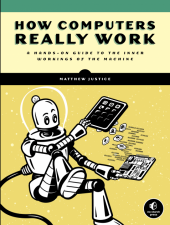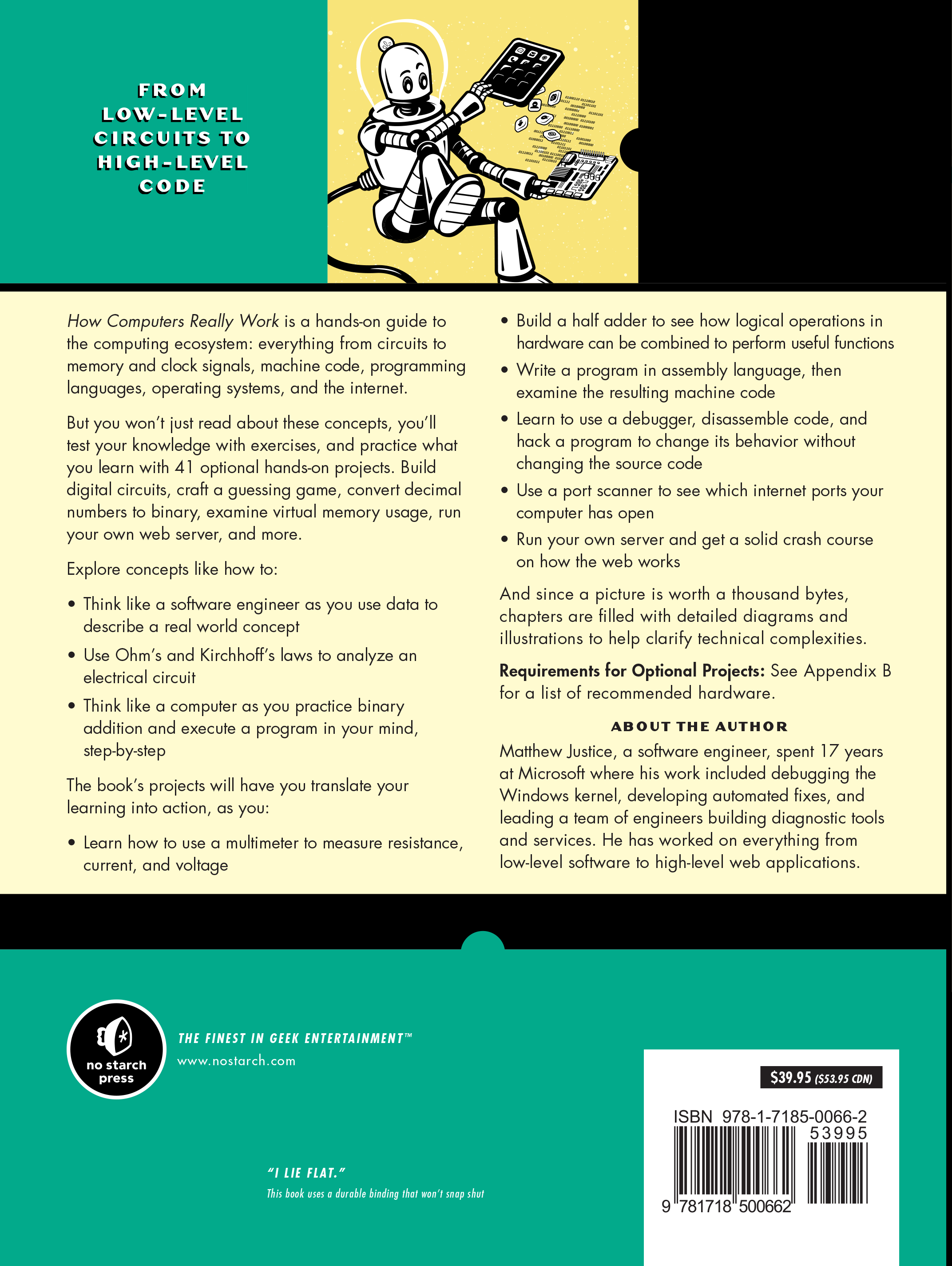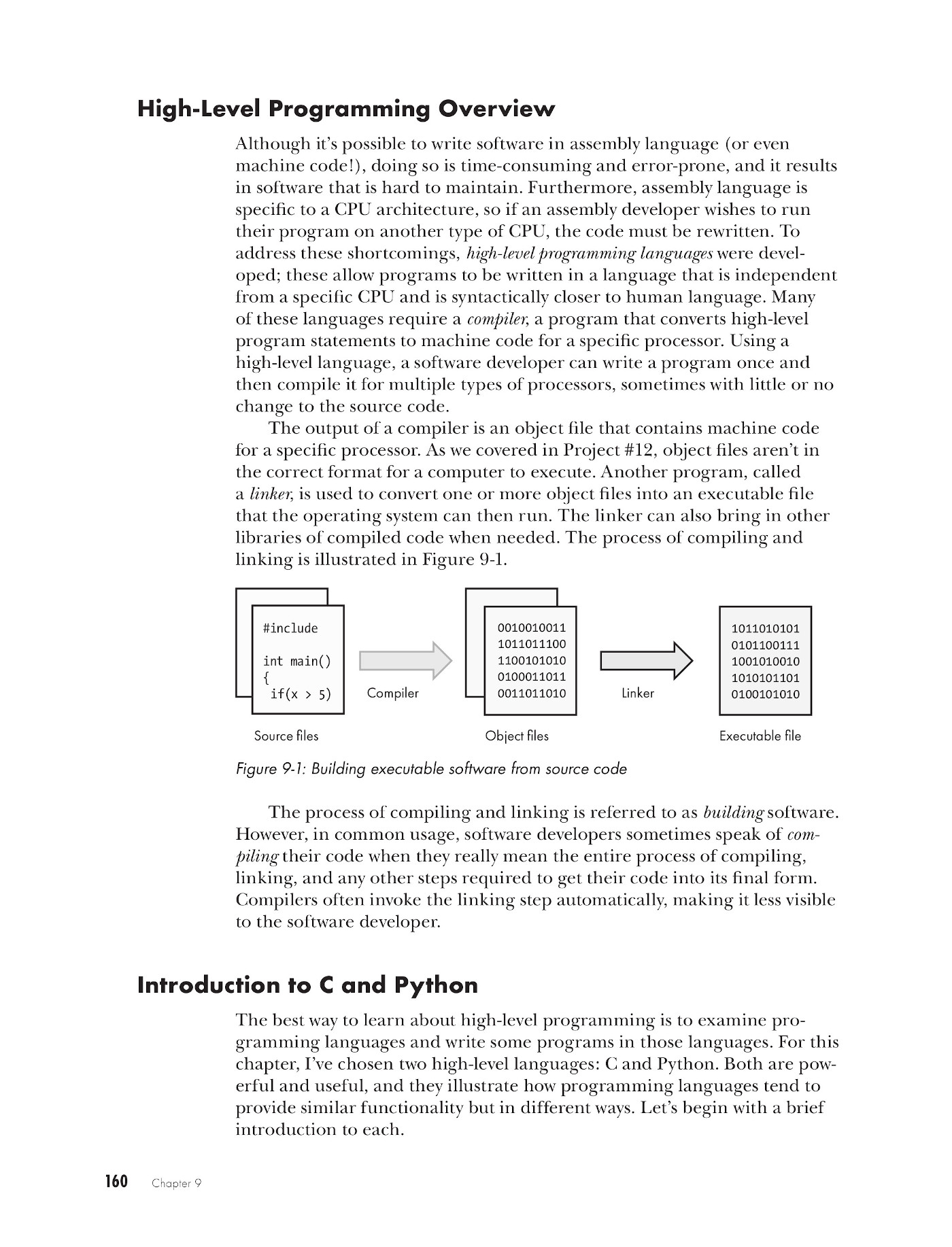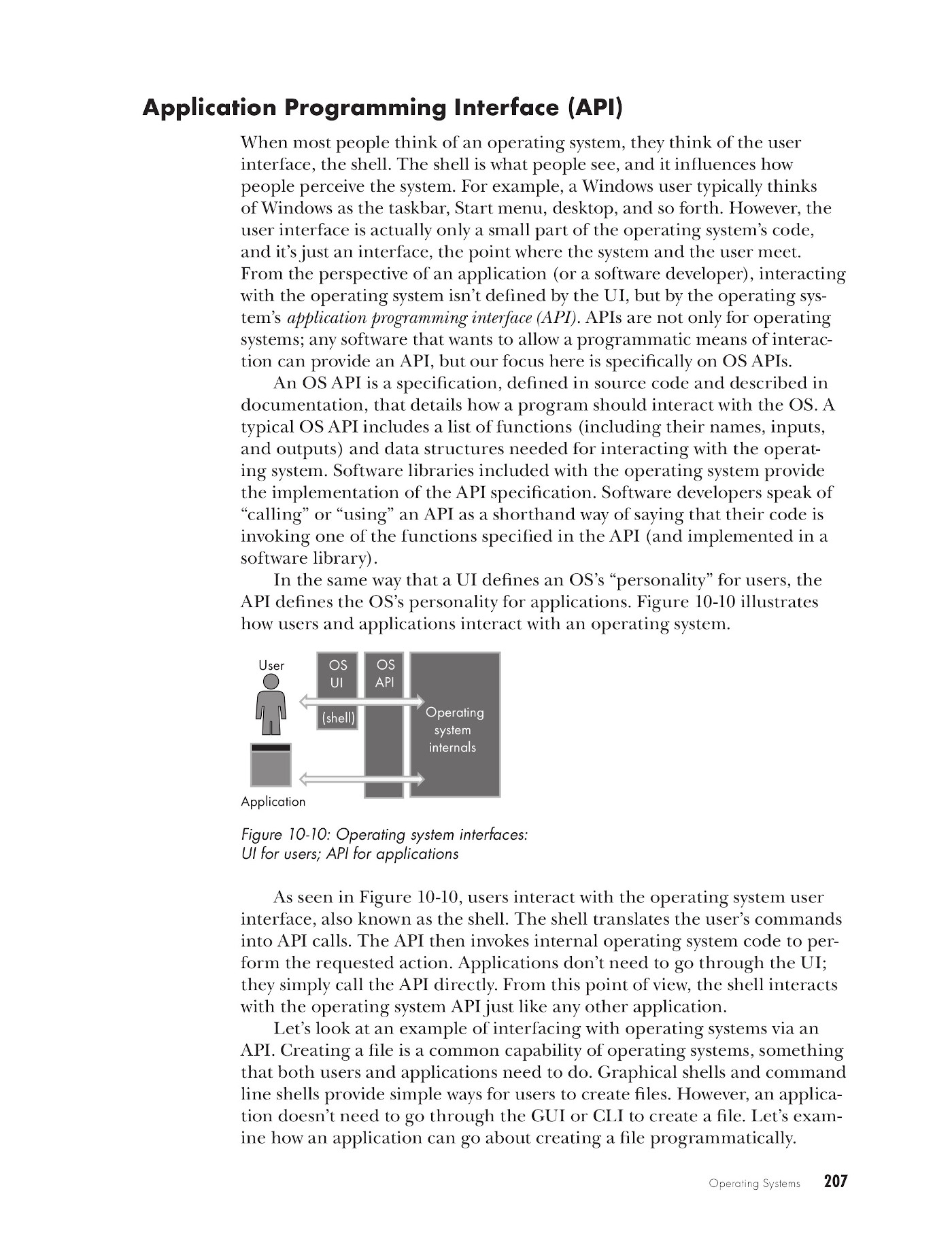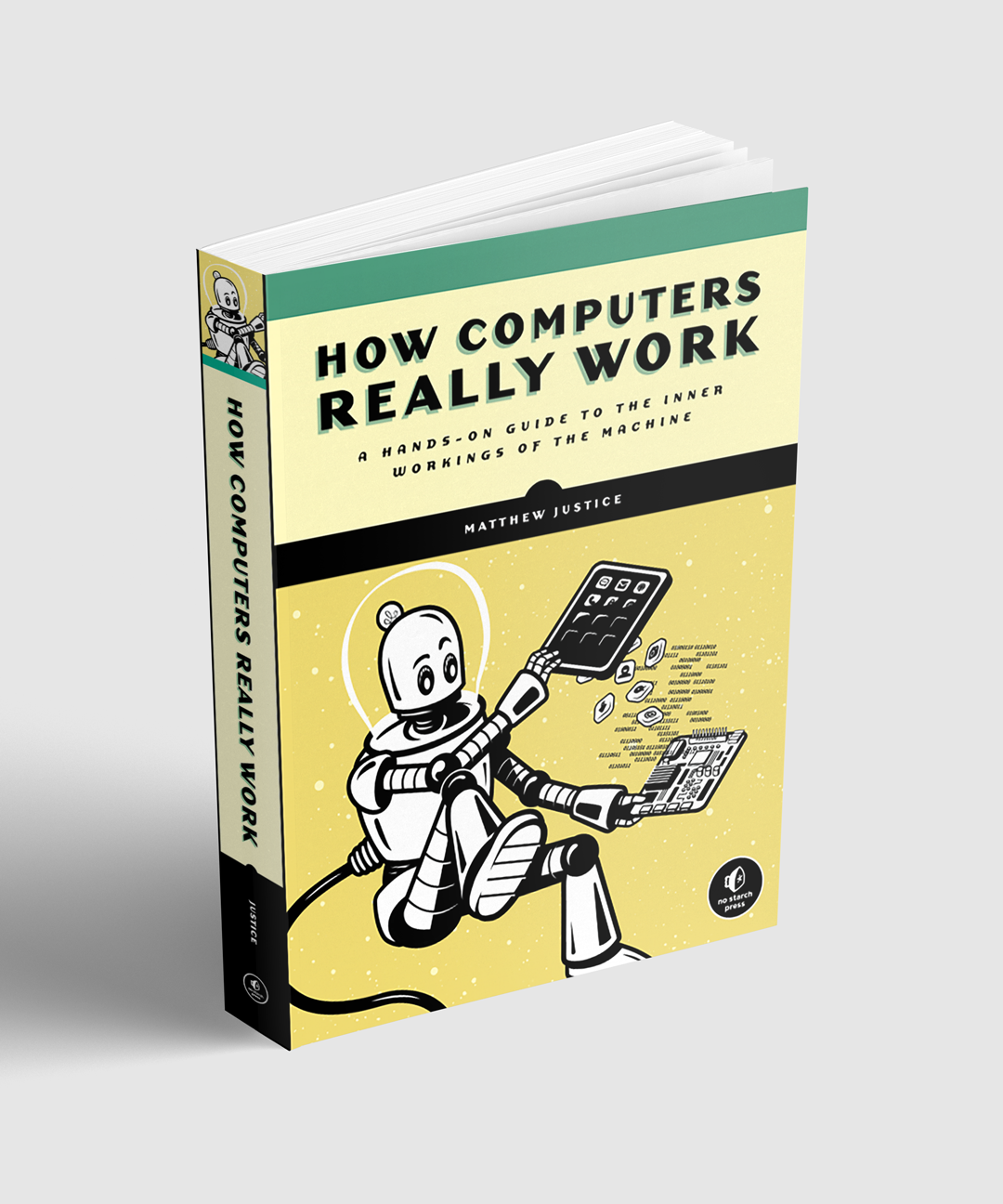Look Inside!
Download Chapter 2: BINARY IN ACTION
FROM LOW-LEVEL CIRCUITS TO HIGH-LEVEL CODE
How Computers Really Work is a hands-on guide to the computing ecosystem: everything from circuits to memory and clock signals, machine code, programming languages, operating systems, and the internet.
But you won’t just read about these concepts, you’ll test your knowledge with exercises, and practice what you learn with 41 optional hands-on projects. Build digital circuits, craft a guessing game, convert decimal numbers to binary, examine virtual memory usage, run your own web server, and more.
Explore concepts like how to:
- Think like a software engineer as you use data to describe a real world concept
- Use Ohm’s and Kirchhoff’s laws to analyze an electrical circuit
- Think like a computer as you practice binary addition and execute a program in your mind, step-by-step
The book’s projects will have you translate your learning into action, as you:
- Learn how to use a multimeter to measure resistance, current, and voltage
- Build a half adder to see how logical operations in hardware can be combined to perform useful functions
- Write a program in assembly language, then examine the resulting machine code
- Learn to use a debugger, disassemble code, and hack a program to change its behavior without changing the source code
- Use a port scanner to see which internet ports your computer has open
- Run your own server and get a solid crash course on how the web works
And since a picture is worth a thousand bytes, chapters are filled with detailed diagrams and illustrations to help clarify technical complexities.
Requirements: The projects require a variety of hardware – electronics projects need a breadboard, power supply, and various circuit components; software projects are performed on a Raspberry Pi. See Appendix B or this page for a complete list. Even if you skip the projects, the book’s major concepts are clearly presented in the main text.

